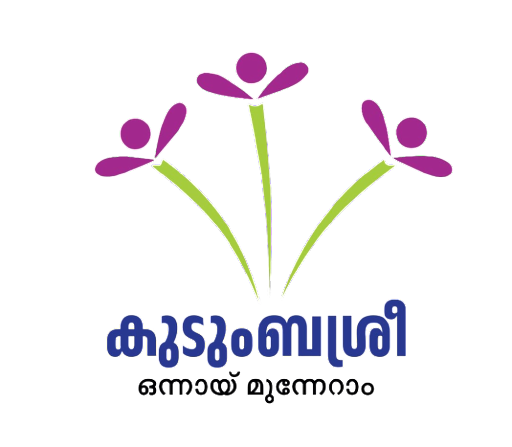Universal Social Mobilization
At least one woman member from each identified rural poor household is to be brought under the Self Help Group (SHG) network in a time bound manner. Special emphasis is particularly on vulnerable communities such as manual scavengers, victims of human trafficking, Particularly Vulnerable Tribal Groups (PVTGs), Persons with Disabilities (PwDs) and bonded labour. NRLM has devised special strategies to reach out to these communities and help them graduate out of poverty.
Participatory Identification of Poor (PIP)
The inclusion of the target group under NRLM is determined by a well-defined, transparent and equitable process of participatory identification of poor, at the level of the community. All households identified as poor through the PIP process is the NRLM Target Group and is eligible for all the benefits under the programme.
Target Group is identified through the Participatory Identification of Poor (PIP) method. The NRLM Target Group (NTG) derived through the PIP is de-linked from the BPL. The efforts to roll-out PIP in the states have begun. PIP needs to be a community-driven process. To ensure this, the first PIP exercise is conducted after the formation of the primary federation (6-12 months after village entry). The PIP is conducted at frequent intervals to revise the list of poor in the village. The list of poor identified through the PIP must be vetted by the Gram Sabha and approved by the Gram Panchayat. All the households in the PIP list are eligible to receive all benefits under NRLM.
Community Funds as Resources in Perpetuity
NRLM provides Revolving Fund (RF) and Community Investment Fund (CIF) as resources in perpetuity to the institutions of the poor, to strengthen their institutional and financial management capacity and build their track record to attract mainstream bank finance.
Financial Inclusion
NRLM works on both demand and supply sides of financial inclusion. On the demand side, it promotes financial literacy among the poor and provides catalytic capital to the SHGs and their federations. On the supply side, the Mission coordinates with the financial sector and encourages use of Information, Communication & Technology (ICT) based financial technologies, business correspondents and community facilitators like ‘Bank Mitras’. It also works towards universal coverage of rural poor against risk of loss of life, health and assets. Further, it works on remittances, especially in areas where migration is endemic.
Livelihoods
NRLM focuses on stabilizing and promoting existing livelihood portfolio of the poor through its three pillars – ‘vulnerability reduction’ and ‘livelihoods enhancement’ through deepening/enhancing and expanding existing livelihoods options and tapping new opportunities in farm and non-farm sectors; ‘employment’ - building skills for the job market outside; and ‘enterprises’ - nurturing self-employed and entrepreneurs (for micro-enterprises).
NRLM promotes and supports collectives towards Sustainable Livelihoods of the Poor (CSLP) around these and other key livelihoods of the poor. These collectives offer their members access to livelihoods knowledge, skills, technology, market intelligence, risk management products and credit support through their SHGs and Federations to individual members/households.
Convergence and partnerships
Convergence: NRLM places a high emphasis on convergence with other programmes of the MoRD and other Central Ministries. Convergence is also sought with programmes of state governments for developing synergies directly or indirectly with institutions of the poor.
Partnerships with NGOs and other CSOs: NRLM has been proactively seeking partnerships with Non-Government Organizations (NGOs) and other Civil Society Organizations (CSOs), at two levels - strategic and implementation. The partnerships are guided by NRLM’s core beliefs and values, and mutual agreement on processes and outcomes. Partnership guidelines to partner with NGOs, CSOs have been finalized and approved this year.
Linkages with PRIs: In view of the eminent roles of Panchayat Raj Institutions (PRIs), it is necessary to consciously structure and facilitates a mutually beneficial working relationship between Panchayats and institutions of the poor, particularly at the level of Village Panchayats. Formal platforms would be established for regular consultations between such institutions and PRIs for exchange of mutual advice, support and sharing of resources.
Sensitive Support Structures
NRLM’s process-intensive effort requires dedicated human resources. Realizing this, NRLM has set up sensitive and dedicated support structures at the National (NMMU), State (SMMU), district (DMMU) and sub-district levels (BMMU/PFT). The institutions of the poor, their staff and other social capital also provide the support in implementing the programme. These structures would have suitable linkages with Government(s), District Rural Development Agencies (DRDAs), and PRIs. These support structures are staffed with professionally competent and dedicated human resources through appropriate arrangements including partnerships and outsourcing of services.
In order to implement the NRLM effectively, National Rural Livelihoods Promotion Society (NRLPS) has been set up under the Societies’ Registration Act of 1860, under MoRD, as the technical arm of the Mission. The NMMU has been made an integral part of NRLPS.
















